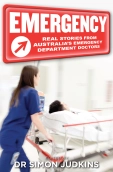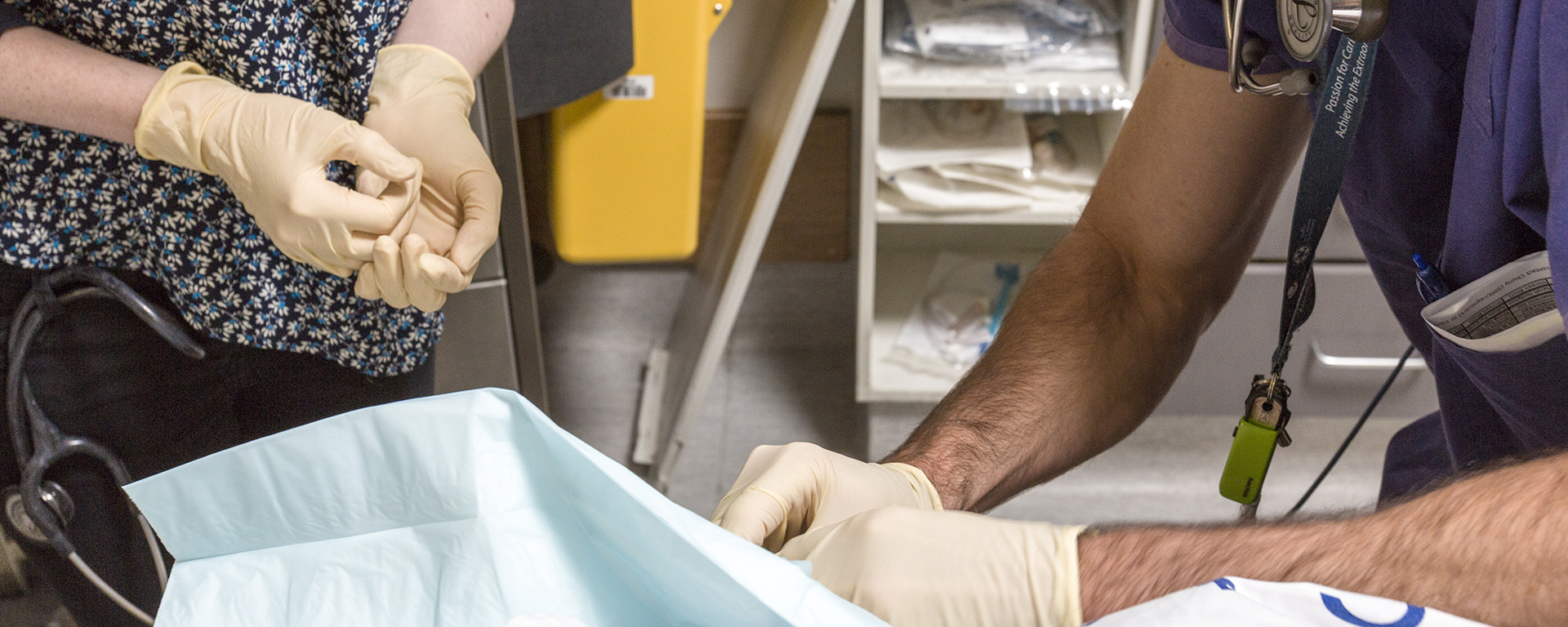It’s the smell that you can never really get out of your head. It’s the brutal insult to the human body and the trauma to the human psyche, for the patients, the family and the staff. The combination of all these factors makes this horrible.
It’s a combination of burnt flesh, burnt hair and singed clothing.
It sticks with you.
When we get the call, I can smell that smell. Even before the patient arrives, I know what we’re going to face. You never forget it if you have experienced it once. I can see the burnt flesh, smell it.
The crew are just around the corner. A thirty-year-old woman with ‘burns everywhere’. The ambos just ‘scooped and ran’. Unable to get a line in, they had given her a morphine injection and put her in the back of the ambulance. Lights and sirens all the way to the hospital.
We know what we have to prepare for. All the things we worry about in resuscitation, the ABCs (airway, breathing, circulation) will be problems here. All of these things will need to be dealt with simultaneously.
I speak with the team. We only have a few minutes, but I give them a briefing of what I expect.
‘Airway is going to be a problem. Apparently she has facial burns and airway burns; the ambo crew have given us a headsup. She is breathing, so they didn’t want to make it worse. They haven’t attempted an airway.
‘We get one shot at an endotracheal intubation.’ That’s the ‘normal’ way we insert a breathing tube, through the mouth and into the trachea. ‘If you can’t see anything,’ I say, turning to my senior registrar, ‘we are going to cut the neck.’ That’s called a surgical airway, where we use a scalpel to cut through to the airway under the Adam’s apple and put a tube directly into the trachea. He nods a lot quicker than I expected.
‘Have you done this before?’ I ask.
‘Nope.’
‘Let’s hope you won’t have to do it now, but it will be a difficult airway.’ Quick nodding again.
‘Ventilation will be a problem. Airway burns means an insult to the lungs. We will manage what we get.’
‘Circulation,’ I go on, ‘we have no access. We apparently only have a few areas that aren’t burnt. One look, then use the drill. We need intraosseous needles in both legs.’ We use a drill to get an IV line straight into the shinbone and the bone marrow. We can use that for fluids and drugs.
Everyone knows his or her job, but still can’t quite fathom what we will have to do.
I can smell the smell before I hear the ambulance sirens – my temporal lobe reminding me of last time. Crashing through the doors, the crew arrive with our patient. She is barely conscious and covered in burns from head to toe.
We move her across to our bed and get to work. The ambulance officer gives me a quick handover.
‘Possible suicide. Might have taken an overdose and then set the house on fire. She was near a window, so the fireman got to her and pulled her out.’
‘What have you guys done?’
‘Couldn’t do much. Brought her straight in. Some morphine. It’s all we could do, her GCS is low.’ A low Glasgow Coma Scale – she was barely conscious. There could be a whole lot of reasons for that. Smoke inhalation, medications, trauma etc. We will need to work that out.
‘OK team, let’s go.’
We work on the ABCs simultaneously. There is a small area behind her legs, on her buttocks and back, that isn’t burnt. She was probably lying on her back when the fire took hold. This gives us a picture of what we’re dealing with: between 80 per cent and 90 per cent burns, meaning close to 100 per cent mortality. But we don’t think about that at this stage. We do what we need to do.
We’re unable to get an accurate blood pressure, as both arms are blistered. No oxygen monitor, as the hands are burnt.
‘How is the airway?’
‘Swollen, black, but she is still moving some air.’
‘One needle into the left leg!’ calls the procedure doc. ‘IV fluids up. Ketamine going in.’ Ketamine gives great pain relief and induces a coma-like state. It’s a good drug in this case.
‘Next IO (intraosseous) going in now.’
‘Great. Airway?’
I look at the registrar and give him a quick nod.
‘Give it one go,’ I say. ‘If not, a surgical airway.’
I look at the neck. As the senior doctor, I’ll make the decisions and do the life-and-death stuff. Blistered and burnt, the neck looks uninviting. I hope we can get a tube in.
‘Position the patient,’ I order. ‘You’ve got suction and a bougie?’
‘Yep.’
‘Rocuronium 150 mg please,’ I call to the nurse, ‘and another 200 of ketamine.’ These are the drugs for a general anaesthetic.
‘Remember,’ I say, ‘one look.’
Beads of sweat materialise on every forehead in the room.
The airway doc inserts the laryngoscope into the mouth and looks into the black hole. ‘I can see bubbles.’
That’s a good sign; bubbles coming up into the pharynx usually come from the lungs.
‘Suction.’
‘Pass the bougie.’
The bougie is slowly passed through the bubbles and behind the swollen epiglottis.
‘I can feel the rings,’ the airway doc calls. The cartilaginous rings of the trachea have a distinct feel as the bougie bumps past them. A sigh of relief ripples around the bay.
‘Good. Pass him the tube.’ I direct the nurse assisting.
The breathing tube is slid over the top of the bougie and into the airway. Frothy, bloody fluid comes up the tube.
‘Oedema.’ Fluid in the lungs, damaged by the hot, smoky air she has inhaled.
We set the ventilator to push oxygen into the burnt lungs. We give medications to sedate her heavily and paralyse her. Her airway is controlled. Her breathing and ventilation are stable, but still need some work.
The next focus is circulation. The lines are in; the fluids are running. Skin provides protection. It’s a barrier to fluid loss. Without it, fluid seeps out. Think about a small burn you have had – the blister and the fluid. Think of that covering almost all of your body.
We need lots of IV fluids, so a line goes into the main blood vessels near the heart to help us manage this. A catheter is inserted into her bladder so we can monitor her fluids more accurately.
While a few of the team work on these issues, we pause and reassess. We look at the arms, the legs, the torso. All burnt. When skin burns, it swells, blisters and then contracts like a tight band around the limbs and chest. Full-thickness burns do this very quickly. As this progresses, the blood supply to the limbs cuts off, and the ability to ventilate worsens.
‘OK guys, airway is secure, ventilation is still difficult, circulation. . . we are still in trouble. We need to do escharotmies.’
We need to loosen those bands that are causing the blood supply problems, the breathing problems. I turn to my senior registrar.
‘No, haven’t done it before.’ He knows the question before I ask.
‘Let’s do this together.’
On each limb we cut through the burnt skin down to the tissue below: from the point of the shoulders down to the wrists, from the hip to the ankle. The tissue below bulges out of the incisions we make as if gasping for air.
We can see the perfusion to the fingers and toes improving as we perform this procedure.
Then we’re on to the chest. We cut a large square over the chest to allow the lungs underneath to expand without the resistance of the burnt tissue surrounding them, which is stopping their expansion with each breath.
The improvement is immediate, but this just means we’ve moved from very, very bad to bad.
She is stable; we are stable. We cover her from head to toe in plastic wrap like artificial skin. It seems pretty basic, but it prevents fluid loss, heat loss and infection.
While we’re doing all of this, we arrange for transfer to the area burns unit. If she is to have any hope of surviving, she needs specialist care.
We continue to do what we can while waiting for her transfer.
We’ve had time to think about how unbearable this is, but no one speaks about it. There is a time for that, and it’s not while we are with the patient. Not while we are delivering care. I do hear one of the nurses whisper under her breath, ‘This is fucking awful.’
I look up from what I’m doing. I make eye contact with her – a reassuring nod. She knows we are in this together.
The retrieval team arrives. They gently move our patient from our equipment onto theirs. In thirty minutes, they have taken our patient and are on their way to the burns unit and intensive care.
We have done all that we can do. We’ve given her a chance.
We’ve tried to alleviate her pain, but we cannot begin to fathom the pain she has been through.
We don’t know her, what she has been through or how her life has come to this.
She did not survive. We all knew she wouldn’t, but we did what we could do . . .
It will stay with me, but I’ll put it away. I’ll deal with the visual impact. I’ll deal with the emotional insult. But the brutality of this will remain.
 It Stays With You by Dr Simon Judkins appears in EMERGENCY: Real Stories from Australia’s ED Doctors, available now from Penguin Books Australia.
It Stays With You by Dr Simon Judkins appears in EMERGENCY: Real Stories from Australia’s ED Doctors, available now from Penguin Books Australia.


 Dr Simon Judkins
Dr Simon Judkins
Probably she was lucky not to survive……I have looked after kids with 85% or more burns in PICU and survival is brutal…..worse than dying I wonder…..If I had 85% or more burns I would want to be allowed to die after what I have seen patients go through.
LikeLike